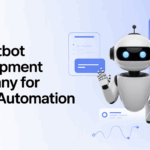AI Helps to Deliver Metaverse Promises: Check How?

As we’re moving into the digital world, the line between the virtual and the physical world continues to blur. In today’s new era, technology like the metaverse is emerging and promises to merge the two realities further. But do you know what the metaverse is? And how businesses make use of it.
In this article, we’ll explore the intersection of the metaverse and AI and also discuss how AI can help deliver Metaverse promises. The article also consists of some potential apps for the AI and metaverse, helping business owners to get an idea of what to look for in this advanced technology.
What is Artificial Intelligence?
—————————-
To understand the term metaverse, we need to know what artificial intelligence is. It’s a process of programming computers to make better decisions for themselves. This can be done in many practices; however, the common approach is through ML.
It’s a subset of artificial intelligence that enables computers to learn from information without being programmed explicitly. This is done through the process of error and trial because the computer tries to search patterns in the data provided.
Deep learning is a refined form of machine learning that utilizes artificial neural networks to understand data. Neural networks are encouraged by the way the human brain works; they can easily learn tasks like natural language processing and image recognition.
What is Web3?
—————————-
It’s used to describe the next generation of the web. In a simple world, it’s a new approach to using the internet. It is designed to make everything easier for people; they can interact and share information.
Unlike Web2 and Web1, which are used for browsing websites, however, Web3 enables users to interact with each other directly through apps known as ‘dapps’, which are decentralized apps where users are in control of their data. Moreover, the metaverse is part of Web3; it uses blockchain technology to achieve decentralization by storing information on a distributed ledger.
What is Metaverse?
—————————-
The convergence of virtual, physical, and augmented reality in a shared online space refers to the metaverse. The merging of virtual and real worlds creates a unique and never-before-seen environment. Liberated from the confines of the physical world, a person can exist as many avatars in different virtual locations.
This creates lots of possibilities for the way we play, work, and, most importantly, live. The metaverse bandwagon is growing at full speed as tech companies pivot to this modern vision. The hype is awesome for investors who are sending warnings to be wary of the predicted gold rush to the metaverse business.
Key Promises of Metaverse
—————————-
Metaverse provides lots of possibilities; we require new ways to explore its capabilities, and artificial intelligence can help to unlock each of them. Technology leaders have the responsibility to build morale in a metaverse in a sustainable and fair way. We’ve glimpses of what the metaverse, AI, and Web3 are. A combo of the three will result in VR-infused experiences like rapper Travis Scott’s recent performance on the multiplayer online gaming platform Fortnite.
More than 12 million people watched live shows in real-time; they existed in multiple worlds as performances split into approximately 250,000 virtual copies of the performance, each one broadcast to groups of 50 viewers. Some of the primary promises of the metaverse include:
Decentralized World
In the decentralized world, the metaverse is where users are in control of their own data. This data is stored on a distributed ledger, ensuring it’s tamperproof and secure.
Identity Verification
Metaverse utilizes modern technology like blockchain, helping to verify the identities of its users. It ensures that authorized users can easily access data.
Smart Contracts
The metaverse uses contracts to automate transactions. It can be used to create a marketplace for artificial intelligence apps or to build a system where information is exchanged automatically between parties.
ETPs
Native cryptocurrency of the metaverse can be used to pay for goods or services. It also rewards artificial intelligence apps for completing tasks.
The metaverse is the realization of a vision to promote the interconnection of the digital and physical worlds with AI, seamless interactive experiences, and driving sustainable productivity growth. You can imagine a virtual world that can be accessed, take an exit, or go back at any time you wish. This can create new possibilities in a person’s life and provide new ways of existence.
The emergence of the metaverse scintillates limitless possibilities with the guarantee of a better virtual world. Technology leaders assume great responsibilities in ensuring the metaverse is built and fulfills the huge potential, but do so in a moral, sustainable, and fair way.
Business Apps of Metaverse: How AI Provides Benefits?
—————————-
There are many ways that artificial intelligence can help to deliver the business apps of the metaverse. Many metaverse development services provide companies using modern technology to offer you an amazingly working app. Explore some of the most AI business apps that are available in the market. Explore them right below:
AIOps
AI-powered operations is a field of artificial intelligence that uses machine learning to help businesses manage IT infrastructure. AIOps can be utilized to prevent outages, predict or identify problems in real time, and optimize resources. The metaverse’s platform is extremely robust, scalable, and always on, which is demanding.
AI-powered operations (AIOps) help to manage their resources effectively and keep the systems running smoothly. For example, metaverse organization usage is spiking. AIOps helps to identify the problems and address them before they become a primary problem.
AI bots
AI-enabled chatbots are gaining popularity among businesses. AI-powered bots in the metaverse can be utilized for lots of tasks, including marketing, sales, and customer service.
It helps the users in the metaverse by providing information & instructions, answering customer questions, taking orders, and performing transactions on users’ behalf. For example, consumers can ask a chatbot where they can search for a product. The bot can then direct the users to the correct metaverse location.
Education and Training
A metaverse is a valuable tool for training and education. Wondering how AI can help make the metaverse effective for training and education? It’s mentioned right below:
- By enabling users to learn in a virtual environment
- Educating investors who are interested in the Pine Labs Unlisted Share Price
- Offer virtual teaching assistants
- Provide education courses
For example, individuals can learn how to drive a car in a virtual environment. They can practice driving, take lessons, and crash the car without real-world consequences. This helps them learn how to drive more safely and faster.
Inclusive User Interfaces
The metaverse platform is easy to use for all users. This means it has a wide range of inclusive user interfaces, including those that are accessible to people with disabilities. Artificial intelligence helps to create user interfaces that are accessible to users, making the metaverse platform user-friendly. The following AI technologies can be used by us:
- Speech recognition to transcribe user speech into natural language processing and text to understand user intent;
- Computer vision enables users to interact with the metaverse via videos and images.
- AR to enable users to overlay digital data on the physical world;
- Translation enables users to interact with the metaverse in their native language.
For example, users with a visual impairment are able to use computer vision to explore the metaverse in amazing detail, or users with hearing impairment are able to use speech recognition to interact with the metaverse.
Digital Avatars
Users interact in the metaverse with each other via digital avatars. You can use these avatars to represent users in the metaverse; they need to be lifelike and realistic. AI can help to build realistic avatars by using:
- Generate realistic images of users with computer vision;
- Create dialogue realistically for avatars with natural language processing.
- Create realistic environments for avatars in virtual reality.
Let’s explain this with an example: users can create an avatar that looks like them, and they might be able to choose from different avatars. The digital avatars can integrate and build realistic dialogue. It helps to create a social experience for metaverse users.
Digital Twins
Representation of a physical object, a digital twin, can be used to track the performance and status of the physical object or predict the future state. Digital twins can be used to represent objects in the digital space. Artificial Intelligence can help to build realistic digital twins by using:
- Create accurate models of physical objects with computer vision.
- Build realistic textures for digital twins with deep learning.
- Create realistic environments for digital twins for virtual reality.
For example, a company creates a digital twin of factories in the metaverse. The digital twin is able to track the factory’s performance and predict future problems. It can help with issues in the physical world by offering a virtual representation of the factory that is used for troubleshooting.
New Digital Products & Services
Metaverse space can be used by organizations to create, sell, and purchase digital products and services. These include:
- VR and AR experiences;
- Digital goods and services;
- Entertainment content.
Businesses, with the help of artificial intelligence, can create new products or services by considering the following things:
- Understand customers’ data to understand their desires and needs;
- Build prototypes of products and services;
- Create realistic simulations of products and services;
- Testing products and services that are released.
The above things can help to improve customer experience, create new revenue streams, boost customer loyalty, create competitive benefits, and lower customer acquisition costs. For example, brands can create VR experiences that enable customers to explore products like houses, cars, etc. This gives individuals a better understanding of the product and also increases sales.
Remote Collaboration & Working
Metaverse enables people to work together in the world from anywhere. Artificial intelligence helps to facilitate collaboration and remote working by:
- Enable real-time translation of text and audio;
- Enable users to share files and documents in the metaverse.
- Provide virtual meeting tools like video conferencing and whiteboards;
- Create realistic simulations of office spaces and meeting rooms.
For example, multiple people might be able to work together on one project from various parts of the world using the metaverse. They can interact with each other in real-time, share files & documents, and collaborate on different projects. This helps to improve collaboration and communication between team members.
Conclusion
Metaverse has the potential to change the world; its platform enables users to interact with each other in a digital space. The combo of AI and metaverse has the potential to change the way we learn, play, and work.
Artificial intelligence helps the metaverse to live up to its promises by building realistic avatars, facilitating remote work, developing digital products & services, and collaborating easily.
Businesses can consider the metaverse as an innovative and creative platform; they can harness the power of artificial intelligence (AI) to create products and services that improve customer experience and provide them with a competitive benefit. Are you ready to begin exploring the possibilities of the metaverse? Get in touch with us to know how we can help with Metaverse NFT marketplace development today.




